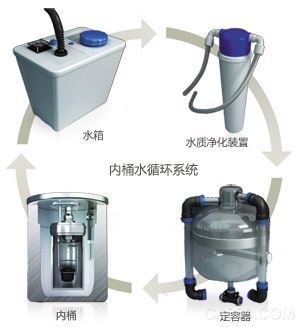Kaiping coal gangue brick blank calorie value measuring instrument / assay calorie machine / heat detector
The calorific value of the calorimeter refers to the amount of calories absorbed by each calorimetric system temperature increase of the device, expressed as J/K. If you want to calculate the calorific value of a sample based on the rise in water temperature after burning the sample, you should first know how much heat you need to absorb to increase the water temperature by 1°C.

Two components
Measuring unit
Decomposition oxygen bomb
Oxygenation station
Three working principles
Calorimeter calorimeter system, in addition to water absorption of heat, the oxygen bomb, the inner cylinder, thermometer and stirrer, etc. will absorb heat, and the respective endothermic situation is not the same, a variety of factors are more complex and can not rely on simple Mathematical calculations can only use the reference of known calorific value, such as benzoic acid, to actually calibrate the calorie required for every 1°C increase in the calorimetric system temperature, that is, to calibrate the heat capacity of the calorimeter.
The heat capacity calibration is valid for 3 months, but should be recalibrated immediately when:
1. The calorimeter in normal use has been moved to a greater extent;
2. Replace the larger parts of the calorific value analyzer oxygen bomb: such as oxygen bomb cover, connecting ring, etc.;
3, change the calorie thermometer;
4. When measuring the calorific value, the actual inner water temperature of the inner cylinder is different from the average inner cylinder temperature of the heat capacity by more than 5°C;
5. The calorific value meter has been overhauled and completely replaced with water; the calorimeter network suggests that if the use environment of the calorie meter does not change significantly for a long time, it will be divided into spring and summer according to the seasonal change of the place of use. In autumn and winter, each calibration is once.

Kaiping coal gangue brick blank calorie value measuring instrument / assay calorie machine / heat detector
1. It is controlled by a single-chip microcomputer and adopts a touch-type Chinese liquid crystal display screen. It is beautiful and easy to operate.
2. High degree of automation, automatic water injection, automatic adjustment of the water temperature outside the barrel, manual operation is only to weigh the weight of the sample, input the weight value of the sample, and the others are all automatically completed together, and print the test result, convenient and quick.
3. The test results are stable and reliable and can be used as an arbitration analysis.
4. Reasonable structure, reliable performance, low failure rate, easy to learn and use.
5. Full-range curve tracking function of experimental data, which can easily check the temperature and time of any point in the curve.
6. Language function: This product has tips such as operation and failure, and the experiment ends with automatic voice report results.
7. Reliable fault auto-tuning function, the device has a variety of protection functions.

A prism is a polyhedron made of transparent materials (such as glass, crystal, etc.). It is widely used in optical instruments. Prisms can be divided into several types according to their properties and uses. For example, the "dispersion prism" that decomposes the composite light into the spectrum in a spectroscopic instrument, the more commonly used is an equilateral prism; in a periscope, binocular telescope and other instruments, the direction of light is changed to adjust its imaging position. "Reflecting prisms" generally use right-angle prisms.
Polyhedrons made of transparent materials are important optical elements. The plane where the light enters and exits is called the side, and the plane perpendicular to the side is called the main section. According to the shape of the main section, it can be divided into three prisms, right-angle prisms, pentagonal prisms and so on. The main cross-section of the prism is triangle, and there are two refracting surfaces. The angle between them is called the apex angle, and the plane facing the apex angle is the bottom surface. According to the law of refraction, light passes through a prism and is deflected to the bottom twice. The angle q between the emitted light and the incident light is called the deflection angle. Its size is determined by the refractive index n and the incident angle i of the prism medium. When i is fixed, different wavelengths of light have different deflection angles. Among visible light, the largest deflection angle is purple light, and the smallest is red light.
In modern life, prisms are widely used in digital equipment, science and technology, medical instruments and other fields.
Commonly used digital equipment: cameras, closed-circuit televisions, projectors, digital cameras, digital camcorders, CCD lenses and various optical equipment;
Science and technology: binoculars, microscopes, level gauges, fingerprint meters, gun sights, solar energy converters and various measuring instruments;
Medical equipment: cystoscope, gastroscope and various laser treatment equipment
Optical Prism,Reflecting Prism Beam Splitter Prism,Non-Polarizing Beam Splitter Prism,Roof Prism
Bohr Optics Co.,Ltd , https://www.bohr-optics.com